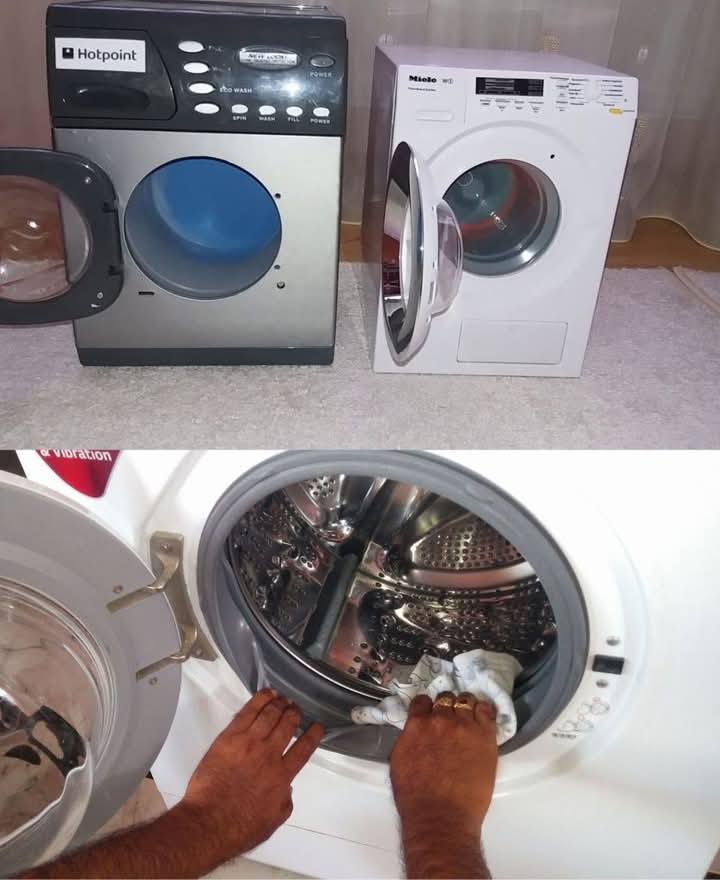ADVERTISEMENT
cially on days when it’s not too cold outside.
Disadvantages of an Open Window:
- Energy Loss: In colder months, opening the window can lead to the loss of warm air from inside the room. This means your heating system will need to work harder to maintain the desired temperature, which could increase your energy bills. In this case, opening the window might result in higher heating costs.
- External Factors: If you live in a noisy or polluted area, opening the window may introduce unwanted sounds or air quality issues into the room, which can be unpleasant.
- Unpredictable Weather: If it’s raining or windy outside, leaving the window open can lead to water coming into the room, creating potential water damage or making the room even colder.
Option 2: Keep the Window Closed
Alternatively, some people prefer to keep the window closed while using the washing machine. There are some advantages to keeping the window shut during laundry time.
Advantages of a Closed Window:
- Energy Efficiency in Cold Weather: Keeping the window closed can help retain the warmth inside the room, which is particularly important in colder months. By preventing heat loss, you can maintain a more stable temperature in the room, reducing the need for extra heating and ultimately lowering your energy bills.
- Less Exposure to Outdoor Elements: Keeping the window closed protects your laundry room from outdoor factors such as rain, wind, or dust. This is particularly helpful if you live in an area prone to unpredictable weather or pollution.
- More Control Over Indoor Temperature: A closed window allows you to regulate the temperature inside the laundry room more effectively, without the influence of cold drafts or fluctuating outside temperatures.
Disadvantages of a Closed Window:
- Higher Humidity Levels: Without proper ventilation, the moisture produced by the washing machine will stay trapped in the room. This can lead to a build-up of humidity, which could eventually cause issues like mold, mildew, and musty odors. If your laundry room doesn’t have a dehumidifier or ventilation system, keeping the window closed could create long-term problems.
- Increased Energy Use for Drying Clothes: If the room gets too humid, the moisture in the air can prevent your clothes from drying as quickly, forcing your dryer to work longer. This means you’ll use more energy to dry your clothes, leading to higher electricity bills.
- For Complete Cooking STEPS Please Head On Over To Next Page Or Open button (>) and don’t forget to SHARE with your Facebook friends
So, Which Option Saves More?
The key factor to consider when deciding between an open or closed window is the climate and environment of your home. Here are a few things to keep in mind:
- In warm, humid climates: It’s generally better to keep the window open to allow excess moisture to escape. High humidity in the room can cause mildew, mold, and musty odors, and proper ventilation is essential. However, if you’re using a dryer, be mindful of the potential for energy loss due to open windows in cooler weather.
- In cold climates: If you live in a colder area, it’s better to keep the window closed to conserve heat. This will help avoid the loss of warm air from the room and reduce the strain on your heating system. Just be sure to monitor humidity levels, as keeping the window closed can lead to moisture buildup. If necessary, consider using a dehumidifier or fan.
- If energy conservation is a priority: In this case, keeping the window closed during colder months will likely save more, as you won’t be wasting energy on heating the room. However, you should invest in proper ventilation solutions such as an exhaust fan or dehumidifier to balance out the humidity.
Final Thoughts: Find the Right Balance
Ultimately, the best option depends on your specific circumstances. There isn’t a one-size-fits-all answer. If you’re looking to conserve energy during the winter, keeping the window closed is generally a better choice. However, if you’re in a warmer or more humid environment, opening the window to allow for better ventilation might save you more in the long run by preventing mold and moisture buildup.
It’s all about striking the right balance. If your laundry room has proper ventilation and you don’t mind some cool air, opening the window can be a great option to keep things fresh. On the other hand, if your goal is to conserve energy and maintain warmth, closing the window is probably the best way to go.
By understanding how humidity, temperature, and ventilation affect your laundry room, you can make a more informed decision and maximize both your energy savings and the lifespan of your washing machine.
